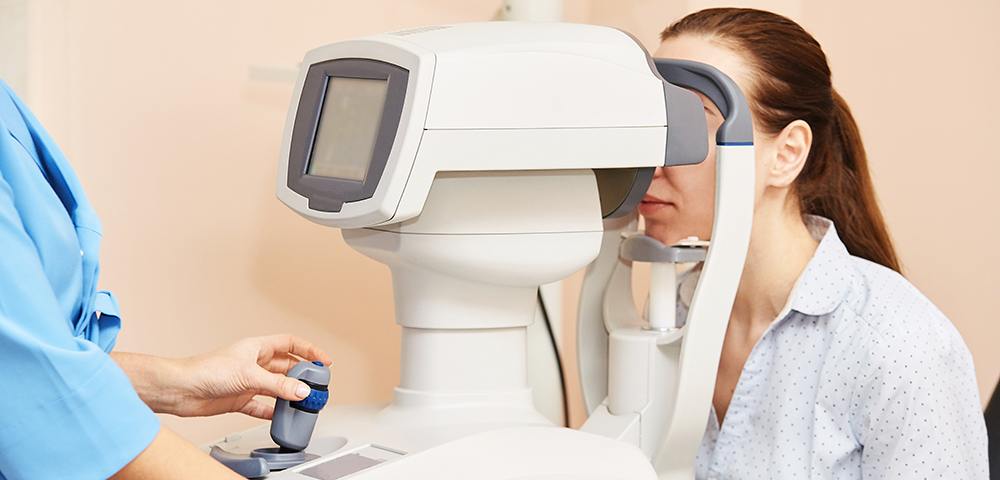
Ocular coherence tomography
Optical coherence tomography (OCT) is a non-invasive procedure that uses light waves to take cross-section pictures of the retina.
OCT allows an optometrist to look at the retina’s distinctive layers to map and measure their thickness. The measurements help your eye doctor diagnose any diseases of the retina and provide guidance when treating other issues, such as:
- Diabetic retinopathy: This condition occurs when blood glucose levels are high for extended periods, causing damage to your eyes’ blood vessels and the retina.
- Macular holes: This condition occurs when there’s an opening or tear in the macula, resulting in blurry central vision.
- Macular pucker: A macular pucker is a wrinkle in the macula that creates a wavy spot in your central vision.
- Macular oedema: When there’s a fluid backup in your macula, it’s called macular oedema. This condition can result in colours appearing washed out, and blurry vision.
- Age-related macular degeneration (AMD): AMD occurs as the macula slowly deteriorates throughout the ageing process.
- Central serous retinopathy: This condition may lead to retinal detachment, which requires emergency care.
- Glaucoma: This condition results from a build-up of fluid at the front of your eye, which can result in damage to the optic nerve.
Tomography can also be used to evaluate the cells of the retina but is not effective for any condition that affects how light passes through the eye, including cataracts.
Do I need an OCT test?
An OCT exam may be recommended by your optometrist as part of your routine eye exam if:
- You are over age 25
- You are at risk of developing eye disease
- You have been diagnosed with an eye disease
- You have any detected abnormalities in your retinal layers
- You are experiencing thickening of retinal layers
- You are being treated for an eye disease that requires monitoring
If you have questions about OCT tests or would like to book an appointment, do not hesitate to reach out to us.
